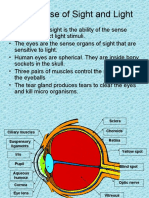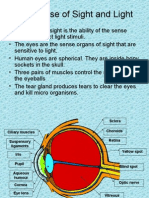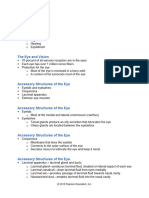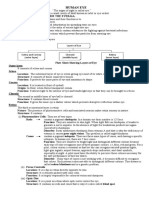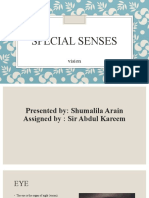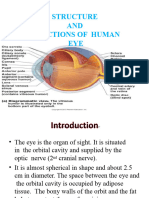0% found this document useful (0 votes)
73 views6 pagesThe Eye and Ear
The eye contains several parts that work together to allow vision. The cornea and lens bend light so it focuses on the retina, where rods and cones detect light and send signals to the brain. The iris controls the pupil size to regulate light levels. Some vision problems occur when the eye grows too long or short, causing light to focus in front or behind the retina for nearsightedness and farsightedness, respectively.
Uploaded by
genngillCopyright
© Attribution Non-Commercial (BY-NC)
We take content rights seriously. If you suspect this is your content, claim it here.
Available Formats
Download as PPTX, PDF, TXT or read online on Scribd
0% found this document useful (0 votes)
73 views6 pagesThe Eye and Ear
The eye contains several parts that work together to allow vision. The cornea and lens bend light so it focuses on the retina, where rods and cones detect light and send signals to the brain. The iris controls the pupil size to regulate light levels. Some vision problems occur when the eye grows too long or short, causing light to focus in front or behind the retina for nearsightedness and farsightedness, respectively.
Uploaded by
genngillCopyright
© Attribution Non-Commercial (BY-NC)
We take content rights seriously. If you suspect this is your content, claim it here.
Available Formats
Download as PPTX, PDF, TXT or read online on Scribd
/ 6










